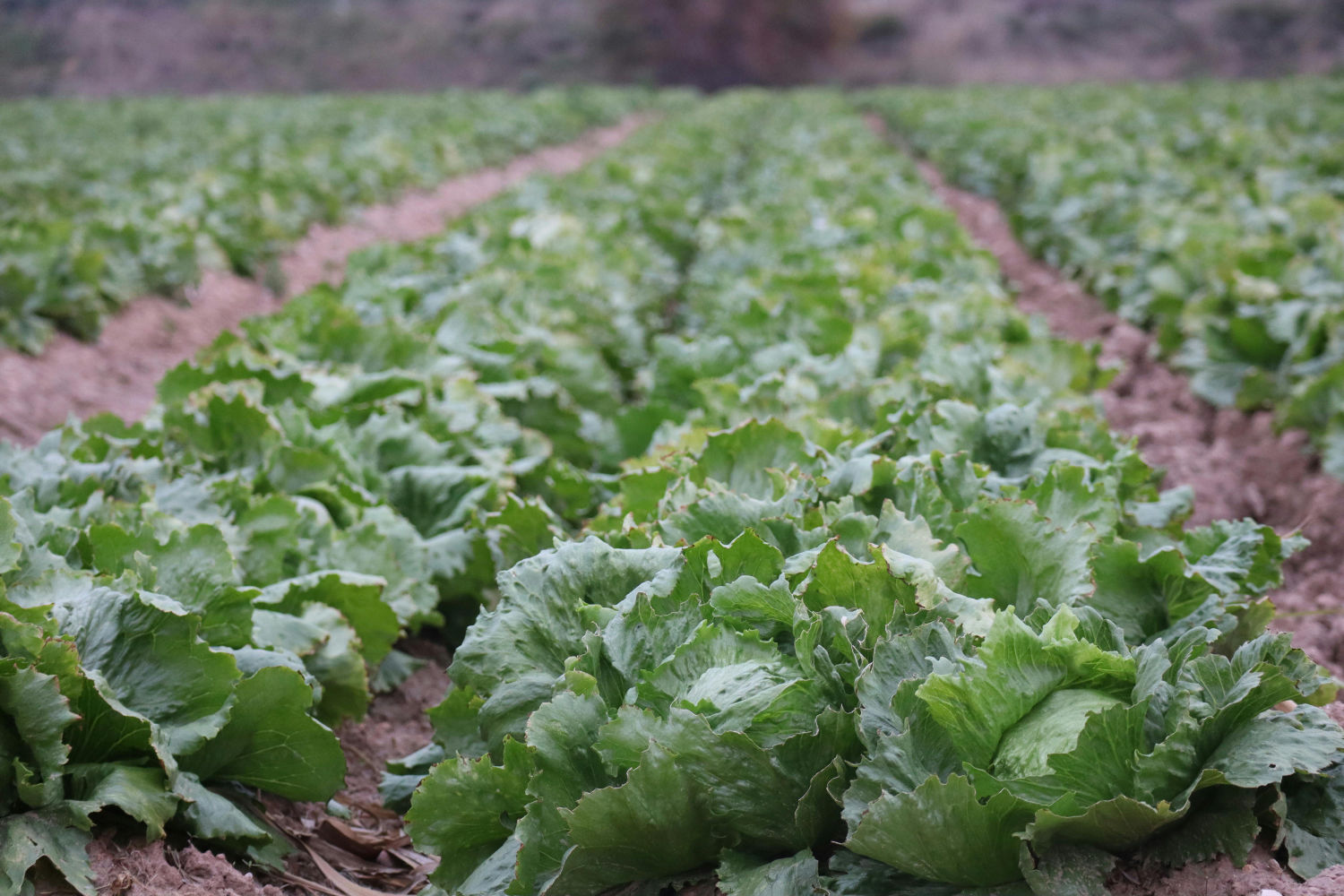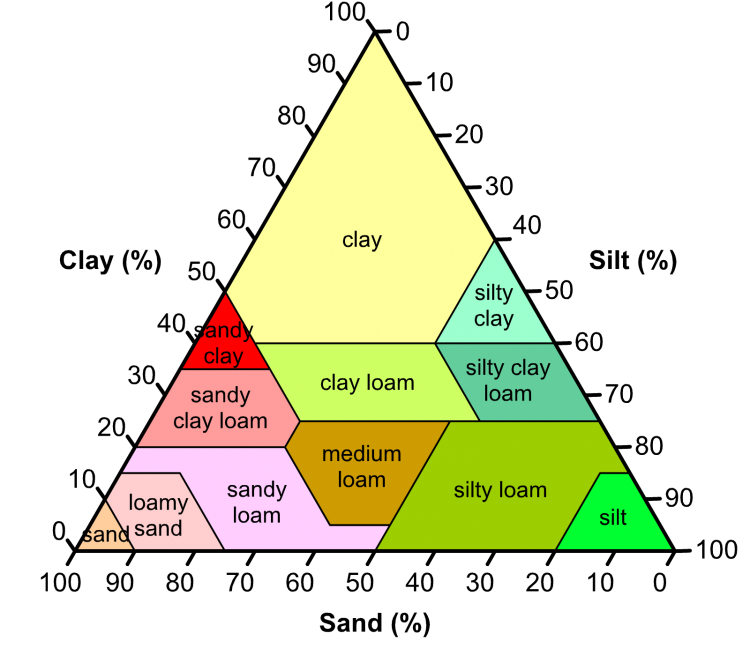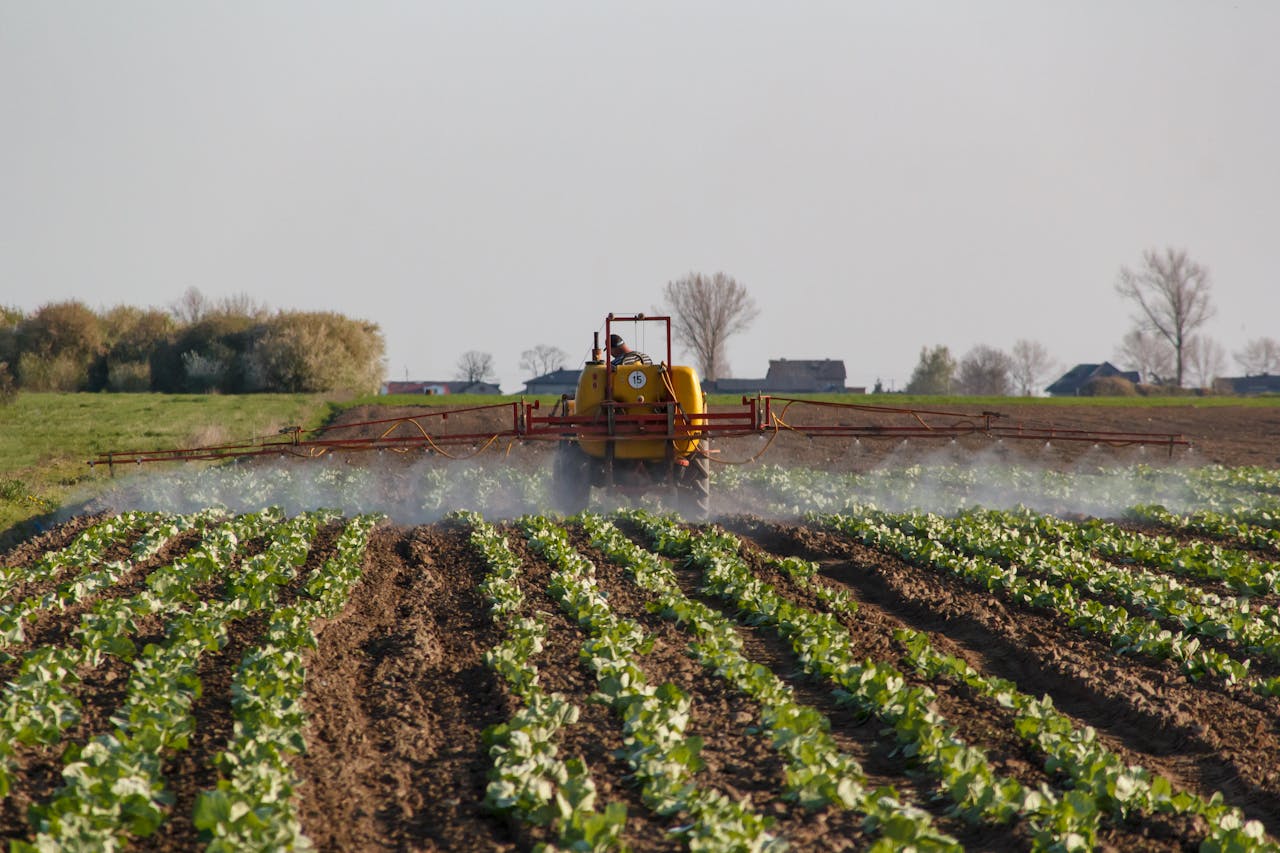
Lettuce fertilizer application tables according to soil types
Lettuce fertilizer requirements can be calculated if you know your soil type and have a good idea of the yield potential of your land and climate. So these tables are not really suitable if you have no experience in lettuce or you have not done a soil analysis. These are basic norms and your specific micro climate and variety can have an influence on the total amount applied. These norms do not take top dressings into account, only the total amount of N, P and K applied during the growth season. The fertilizer can be applied either through the irrigation system or as granular fertilizer. Consult your supplier on the effectiveness of these fertilizers on the various soils to make adjustments to these amounts. It is also crucial to note that most of the variation in yields must be attributed to micro-climate and variation in water applied1 (combined irrigation and rainfall). Its important when calculating fertilizer recommendations, to minimize pollution while maximizing yields2. Leafy crops such as lettuce and spinach react quickly to higher fertilizer rates, but their susceptibility to pest damage, disease infestation and shelf life is negatively impacted by too high rates3. High nitrogen rates might increase yields significantly and darker the colour, but it will also reduce leaf thickness and head density4. Lettuce varieties can be more sensitive to variation in N levels in the soil, but the grower has a higher margin of error with P fertilization5.
Three soils are used in these tables:
- S/SL – Sandy to Sandy Loam
- SL/S – Sandy Loam to Sand
- SCL/C – Sandy Clay Loam to Clay
Lettuce Nitrogen (N) application
Lettuce fertilizer requirement i.t.o nitrogen is easy. You don’t need a soil analysis just a good idea of your yield potential in the area. Be careful not to overestimate your potential yields as too much nitrogen will also have a negative effect on total yield and the quality of the leaves. High nitrogen content makes the plant more susceptible to insect damage and diseases because the leaves are softer and thinner. This makes shelf life much shorter. It was found that Calcium Nitrate (CaNO3) fertilizer as a source of N, yielded more crunchy lettuce leaves than potassium nitrate (KNO3) or ammonium nitrate (NH4NO3)6.
| Yield target t/ha | S/SL | SL/S | SCL/C |
|---|---|---|---|
| 0-30 | 90-120 | 80-102 | 70-80 |
| 31-40 | 110-140 | 100-130 | 80-110 |
| 41-60 | 130-160 | 110-142 | 100-130 |
Lettuce Phosphorus (P) requirement – (Bray 1)
Phosphorus fertilizer requirements are based on Bray 1 lab analysis. If another method is used the values must be adjusted. The minimum amount applied is always about 20 kg P per hectare as P is not that mobile and a certain level of P must always be maintained in the soil. Because lettuce has a short life cycle, P is not that critical, but the base amount is the minimum that must be applied.
| P analysis (ppm) | Yield target 0-99 t/ha |
|---|---|
| 1-10 | 140-160 |
| 11-20 | 120-140 |
| 21-30 | 100-120 |
| 31-40 | 80-100 |
| 41-60 | 60-80 |
| 61-80 | 40-60 |
| 81-100 | 20-40 |
| 101-120 | 0-20 |
| 121-200 | 0 |
Lettuce Potassium (K) fertilization
Potassium requirements are based on a soil analysis and yield estimates. Potassium is extremely important for flower formation and water regulation. Over fertilization can increase the salt content of the soil to such an extent that water uptake is reduced. Note that low nitrogen soil content will impair the translocation of potassium to other parts of the plant. A potassium deficiency in the plant will not be noticed as quickly as nitrogen or iron. Deficiency symptoms occur first in the older leaves as potassium is transferred to younger leaves first. Note that beans are sensitive to salt stress, so too high applications can reduce yields. Be careful not to use KCl fertilizers and the chlorine will increase the salt content of the soil, making it harder for plants to absorb water.
| Soil type | Soil analysis | Yield t/ha | ||
|---|---|---|---|---|
| ppm | 0-30 | 31-40 | 41-60 | |
| S/LS | 1-20 | 180 | 210 | 240 |
| SL/L | 1-30 | 180 | 210 | 240 |
| SCL/C | 1-40 | 180 | 210 | 240 |
| S/LS | 21-40 | 140 | 176 | 200 |
| SL/L | 31-60 | 140 | 176 | 200 |
| SCL/C | 41-80 | 140 | 176 | 200 |
| S/LS | 41-60 | 100 | 142 | 160 |
| SL/L | 61-90 | 100 | 142 | 160 |
| SCL/C | 81-120 | 100 | 142 | 160 |
| S/LS | 61-80 | 73 | 108 | 130 |
| SL/L | 91-120 | 73 | 108 | 130 |
| SCL/C | 121-160 | 73 | 108 | 130 |
| S/LS | 81-100 | 42 | 74 | 87 |
| SL/L | 121-150 | 42 | 74 | 87 |
| SCL/C | 161-200 | 42 | 74 | 87 |
| S/LS | 101-121 | 28 | 40 | 58 |
| SL/L | 151-180 | 28 | 40 | 58 |
| SCL/C | 201-240 | 28 | 40 | 58 |
| S/LS | 121+ | 20 | 20 | 30 |
| SL/L | 180+ | 20 | 20 | 30 |
| SCL/C | 241+ | 20 | 20 | 30 |
Below is the well known soil texture triangle on which the Lettuce fertilizer recommendations are based. Most commercial agricultural soils are found in the left bottom corner as they are the most productive and provide the plant with best yield potentials.

Soil textural triangle for Butternut fertilizer requirements. Credit: https://commons.wikimedia.org/wiki/File:USDA_Soil_Texture.svg by Christopher Aragón.
Credit featured image: Photo by El Capra:
References
- D.J. Greenwood, T.J. Cleaver & K.B. Niendorf. 2009. Effects of weather conditions on the response of lettuce to applied fertilizers. The Journal of Agricultural Science , Volume 82 , Issue 2 , April 1974 , pp. 217 – 232.
- Fontes, P.C.R. , Pereira, P.R.G. & Conde, R.M. 1997 Critical chlorophyll, total nitrogen and nitrate nitrogen in leaves associated to maximum lettuce yield J. Plant Nutr. 20 1061 1068
- Hoque, M. M., Ajwa, H., Othman, M., Smith, R., & Cahn, M. (2010). Yield and Postharvest Quality of Lettuce in Response to Nitrogen, Phosphorus, and Potassium Fertilizers. HortScience horts, 45(10), 1539-1544. Retrieved Dec 23, 2024,
- Tittonell, P. , Grazia, J.D. & Chiesa, A. 2001 Effect of nitrogen fertilization and plant population during growth on lettuce (Lactuca sativa L.) postharvest quality Acta Hort. 553 67 68
- Sanchez, C. A., and N. M. El-Hout. “Response of diverse lettuce types to fertilizer phosphorus.” HortScience 30.3 (1995): 528-531.
- Simonne, Eric, Amy Simonne, and Larry Wells. “Nitrogen source affects crunchiness, but not lettuce yield.” Journal of Plant Nutrition 24.4-5 (2001): 743-751.





